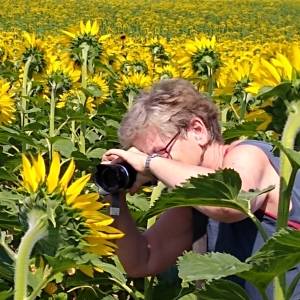Cloister, la Seu d'Urgell
Better in large. Spare blip: La Seu by night.
We started another hot day in the cool of the Romanesque cathedral in La Seu d'Urgell. The museum here has a beautiful illustrated Beatus, which I remembered vividly from my last visit about a dozen years ago. Sadly, you can't flip through the pages of the 11th-century book, but a video presents some of the stunning Mozarabic-style images, and then you get to look briefly at the book in a glass case. You can see some of the images here, although it's not the official video. I just love this style of art, especially the monsters and the angels. And looking around the rest of the museum just confirmed my view that ecclesiastical art only got duller over the centuries.
After that, following a recommendation from the lady in the tourist office, we went to a medieval market in Castellbo. This is a beautiful village in the mountains above La Seu, and the first thing we saw when we arrived was the perfect campsite: a little plot by the stream on the edge of the village with about a dozen pitches and a small swimming pool, next door to the combined shop/bar/restaurant. We'd have camped here like a shot if we'd known about it.
The market was better than we expected too: there were about twenty stalls distributed through the village, all selling genuinely handmade items from clothes and jewellery through hand-carved wooden bowls, to bread, cake, and cocas (Catalan pizza), honey, fruit and vegetables, and beer. There was a bookstall too, where I bought a book of medieval Catalan recipes (in Catalan but with a parallel French translation)
For lunch we had an ice cream; it was too hot to contemplate anything else. And then we returned to the hotel for a siesta. Later in the afternoon we went to the park to lounge and read. La Seu d'Urgell was the watersports site for the 1992 Barcelona Olympics and the legacy is a large park alongside the river Segre with a rafting and canoeing course in it.
Later we went out for a light dinner. On the way we encountered a band, and some people dancing sardanas, the Catalan national dance. I once inadvisedly commented to a Catalan that it was a boring dance. He told me that in fact it's quite complex and requires much skill. So we paused to inspect the footwork, and it is true that the tunes are clearly divided into sections, with slightly different steps for each section. When we looked around, we noticed that all the other spectators were critically inspecting the footwork too. Then a sharp whistle behind us alerted us to an annoyed looking man who told us with gestures that we were blocking his critical appraisal and should get out of the way, so we did. Even with this additional knowledge, it still looked pretty boring to me. But the numerous dancers were clearly locals who enjoyed getting together for a dance on a Sunday evening.
After dinner, we went to see a series of "living tableaus" of the life of St Ermengol (Bishop of La Seu in the 11th century) in the cloisters of the cathedral. The lady in the tourist office had convinced us it was worthwhile. The scenes, with a total of about fifty people, and accompanying music, were quite attractive, but the fact of the matter is that Saint Ermengol didn't lead a very interesting life.
All the narration was in Catalan, and we'd forgotten to bring the English translation we were given in the tourist office. But it was surprisingly easy to understand the gist. I took a handful of photos, none of which were worth blipping. Many people in the audience were snapping merrily away with their phones, and in one case a tablet brandished above the head. It was so dimly lit I can guarantee none of the photos was worth keeping, and they'd have been better off just watching.

Comments
Sign in or get an account to comment.


